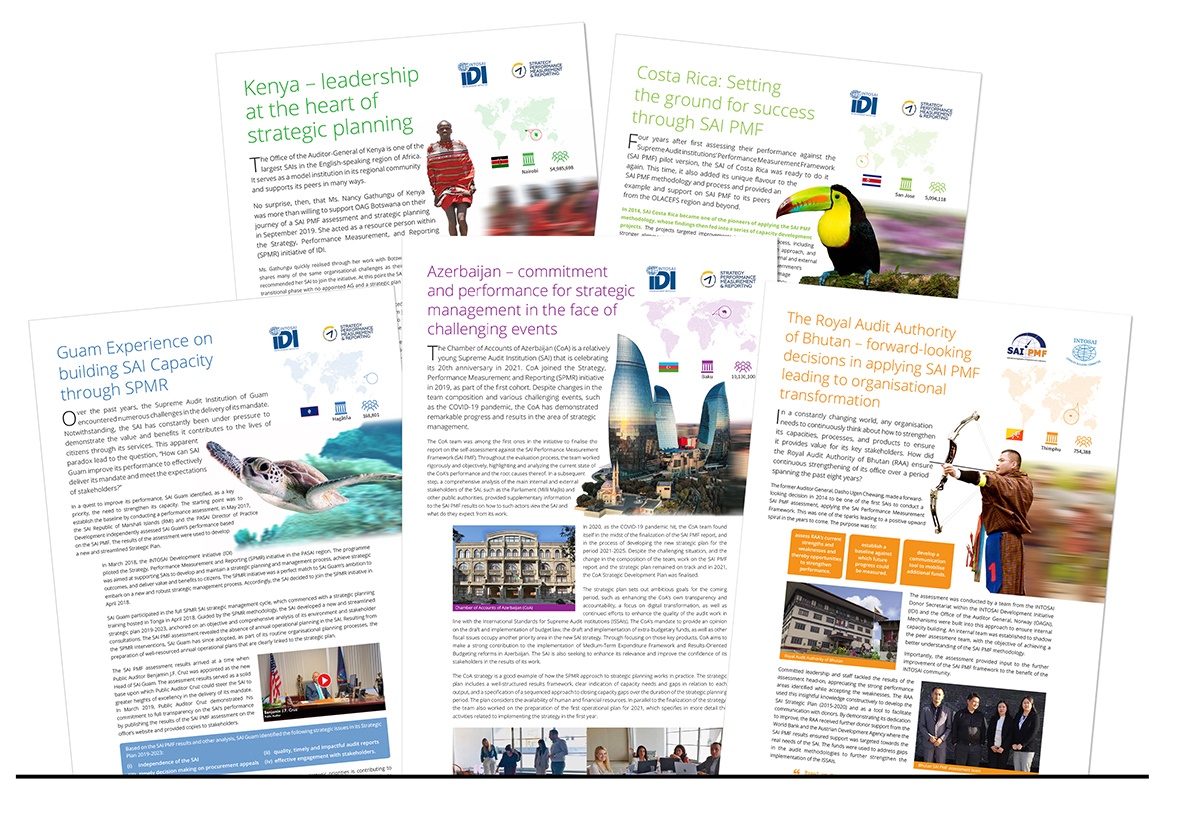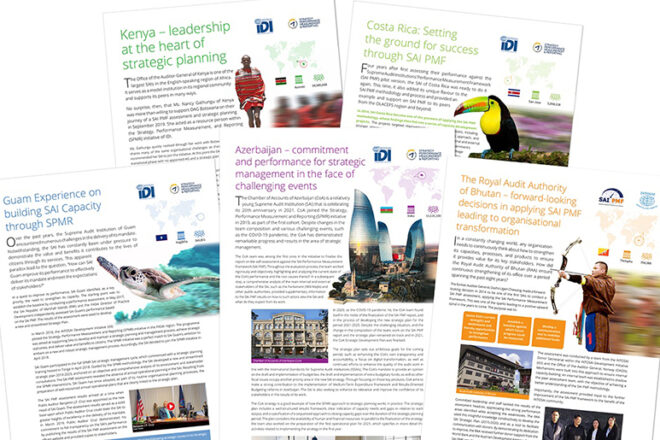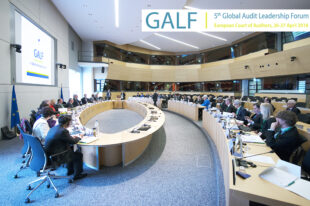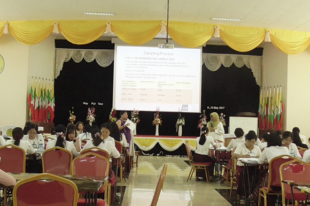The SAIs participating in SPMR have proven in their own unique ways that they have both the capacity and a growing strategic management toolkit to successfully deal with even the harshest and most unexpected of circumstances.
by Dafina Dimitrova, Senior Manager of SAI Governance, IDI
When the COVID-19 pandemic hit in March 2020, 22 Supreme Audit Institution (SAI) teams participating in INTOSAI Development Initiative’s (IDI) Strategy, Performance Measurement and Reporting (SPMR) initiative found themselves in a precarious situation. They had spent over a year assessing their performance and crafting a strategic plan, which seemed to be turned upside down in the face of the dramatic events that were unfolding. As teams struggled with access to information, communication, and safety, was there any space to focus on strategic planning and management, or would their efforts prove futile?
The SPMR Premise
SPMR’s global rollout, supported by the Swiss State Secretariat for Economic Affairs (SECO), launched in late 2018 for 22 SAIs from three INTOSAI regional groups: the African Organization of English-speaking SAIs (AFROSAI-E), the Asian Organization of SAIs (ASOSAI), and the European Organization of SAIs (EUROSAI). Three other regional groups—the Arab Organization of SAIs (ARABOSAI), the Regional Council for the Training of SAIs of Sub-Saharan Francophone Africa (CREFIAF), and the Organization of Latin American and Caribbean SAIs (OLACEFS)—joined in 2019, bringing the total number of participating SAIs to over 40.
The initiative’s premise was that SAIs can improve their overall performance in a sustainable manner by holistically strengthening their strategic management processes. To that end, participating SAIs work through key elements of strategic management in a relatively linear, albeit iterative, process: from assessing performance using the SAI Performance Measurement Framework (SAI PMF), through strategic and operational planning, to establishing regular monitoring and reporting procedures. The final step is to conduct another SAI PMF assessment, to measure progress and provide inputs for the next strategic plan.
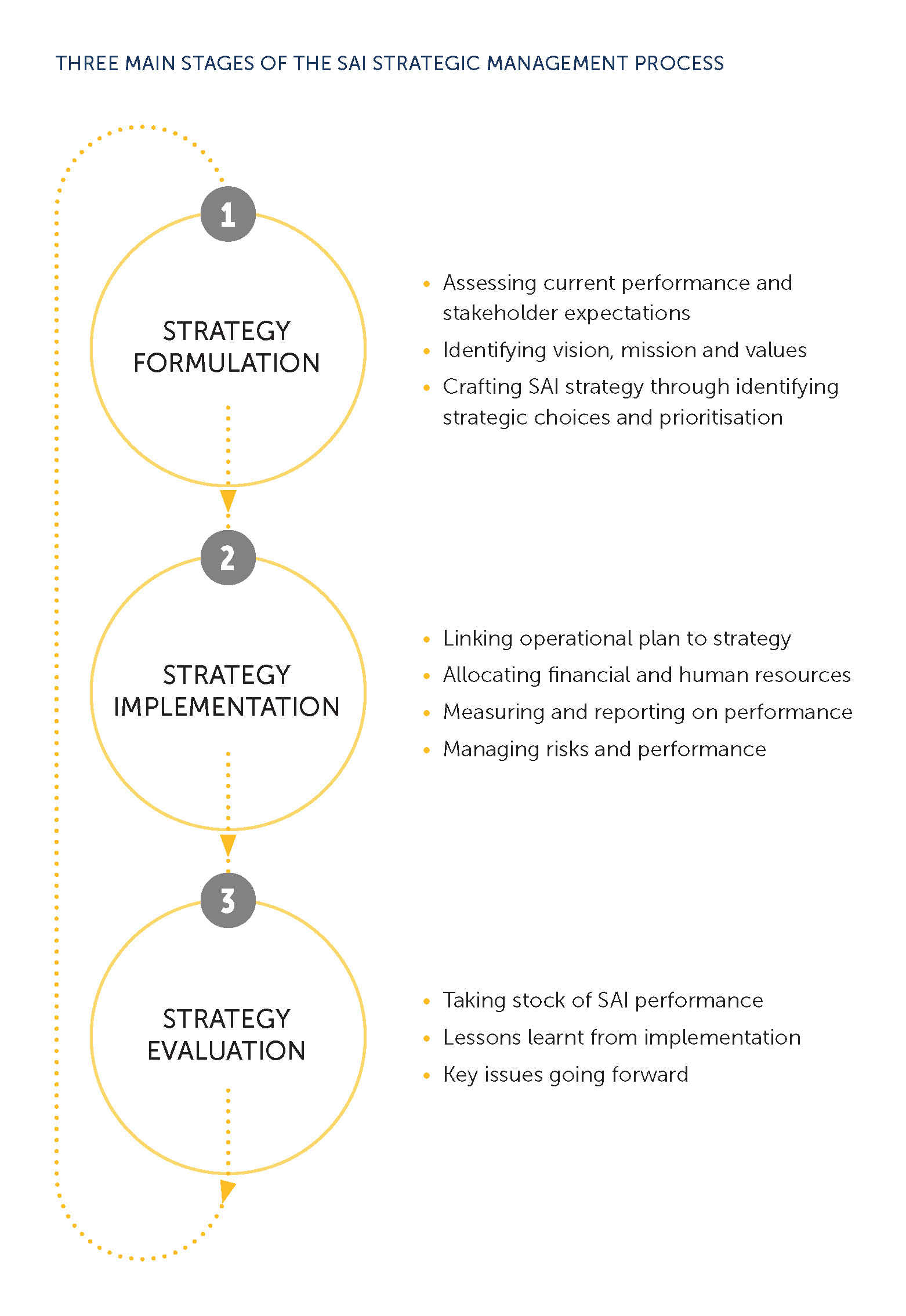
An Unprecedented Stress Test
COVID-19 acted as an unprecedented stress test to the SPMR approach. The pandemic called into question the content and duration of strategic plans, exacerbated operational planning challenges, and made evident the scarcity of resources available to many SAIs. It also posed fundamental questions regarding the relevance and role of SAIs as public sector institutions, and how these are captured in organizational plans and processes.
Originally, SPMR consisted of face-to-face regional workshops, as well as in-country and remote support provided by a dedicated advisor from IDI or a resource person. The pandemic put a stop to planned workshops and in-country activities, and in many cases, it disrupted the IDI team’s contact with participating SAIs. IDI grappled with the question of what kind of strategic management support was needed and how to provide it. When faced with such adverse events, it was fair to wonder if SAIs would and should prioritize finalizing their SAI PMF assessments and crafting strategic plans.
Leveraging SPMR Participation
The SAIs from the first three regional groups, which had advanced the furthest within the initiative when the pandemic hit, soon realized that the progress they had made in SPMR could help them emerge stronger from the crisis. After the initial shock, most SPMR participants quickly established remote work routines and restored contact with the IDI team, despite ongoing challenges related to information access, technology, connectivity, and work-life balance. On the IDI side, the team quickly re-arranged workflows and explored the possible short- and longer-term impacts of the pandemic on SAI strategic management.
IDI published guidance materials and rolled out a COVID-19 webinar series in April and May 2020. The SAI Strategic Management Handbook, published at the end of 2020, incorporated material on COVID-19 and reflected on initial experiences responding to it. Subsequent bilateral support and courses on operational planning, monitoring, and implementation shifted to a fully digital mode, enabling a more agile approach.
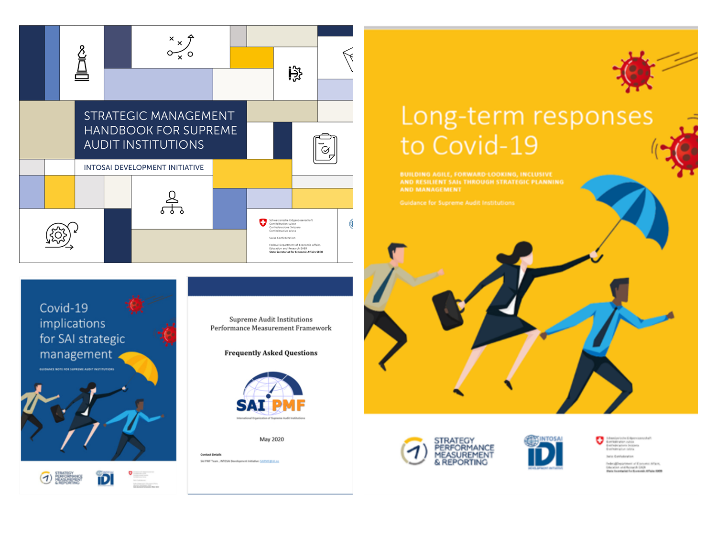
Three factors supported SAIs in leveraging their participation in SPMR during the pandemic.
First, SAI PMF results, even at the draft stage, were still to a large extent valid, relevant, and helpful. SAI PMF provides a holistic assessment of performance across six fundamental domains: independence and legal framework, internal governance and ethics, audit quality and reporting, financial management, human resources, and external communication. These detailed findings provide a solid basis for understanding the strengths and weaknesses of SAI performance.
SAI PMF’s panoramic analysis supported SAIs in making short-term decisions and prioritization to ensure business continuity in the first months of the crisis. While SAIs may have viewed the findings through a different lens during the pandemic, the baseline information remained relevant.
Second, feedback from internal and external stakeholders—such as members of parliament, the executive branch, and civil society, as well as SAI staff—has helped participants craft a strong SAI strategy. Participating SAIs were at different stages of gathering stakeholder feedback when the pandemic struck. Nevertheless, the pandemic offered a new opportunity to approach stakeholders and better understand the role SAIs can play in ensuring the transparency and accountability of COVID-19 emergency funding.
Third, SAIs took a fresh look at their draft strategic plans, defining new outcomes related to tackling the effects of the pandemic. SAIs also adjusted their priorities in light of the human and financial resource pressures that many were experiencing. SAIs’ strategic plans had to serve as blueprints for meeting their mandates, remaining relevant in the face of new challenges, and improving performance sustainably in the most critical areas.
More than a year after the onset of the pandemic, how have the SPMR SAIs weathered the pandemic through strategic management?
By mid-2021, participating SAIs from the first three regional groups (AFROSAI-E, ASOSAI, and EUROSAI) had completed the formal methodological aspects of the SPMR initiative. Eighteen of those 22 SAIs have finalized their SAI PMF reports or are at the final stage of IDI’s independent review of their quality.
Eleven of the 22 SAIs have had their new or revised strategic plans approved by management or are in the final draft stage pending management approval. The other eleven SAIs are developing a new strategic plan for 2022. Plans focus on the challenges posed by the pandemic and prioritize, among other things, digitalization, enhanced internal and external communication, the introduction of new audit types and topics, management of human resources, and staff welfare. The SAIs have also prepared improved operational plans that address financial and human resources, risk monitoring, and prioritization. The SAIs in the three regional groups that joined later are still progressing toward results.
SAI Success Stories
Each participating SAI has brought its unique context and experience to the SPMR initiative and supported peer learning. IDI has captured some of these experiences in a series of SAI PMF and SPMR success stories. For example:
- The experiences of Bhutan and Costa Rica show how a repeat SAI PMF assessment can help SAIs measure progress and achieve improvements across strategic planning cycles.
- The cases of Azerbaijan and the Maldives illustrate how teams can persevere and achieve great results despite an array of additional challenges, such as changes in team composition and political turmoil.
- SAI leadership and commitment to excellence have been key to achieving strategic management results in Georgia, Guam (part of the SPMR pilot group in the Pacific region), and Kenya.
These stories reflect the wide range of planned and unexpected changes to which SPMR has contributed. They also demonstrate how SPMR participants can have an amplifying effect as they take on new roles. For example:
- While acting as a regional SPMR resource person for the AFROSAI-E SAIs, Ms. Nancy Gathungu was appointed Auditor-General of Kenya.
The team leader of the Azerbaijan SPMR team, Ms. Vafa Mutallimova, became a member of the Board of the Chamber of Accounts while in this role. - In Guam, a small SAI with fewer than 20 staff, Mr. Jerrick Hernandez, who participated in SPMR’s pilot, went on to act as a resource person in the initiative’s global rollout. Mr. Hernandez is now advising the SAI of the Philippines—one of the largest and most complex SAIs in the ASOSAI region—on strategic management.
Strategic management can be a challenging process. It requires an open mind, perseverance, leadership commitment, agility, and collaboration. The SAIs participating in SPMR have proven in their own unique ways that they have both the capacity and a growing strategic management toolkit to successfully deal with even the harshest and most unexpected of circumstances.
